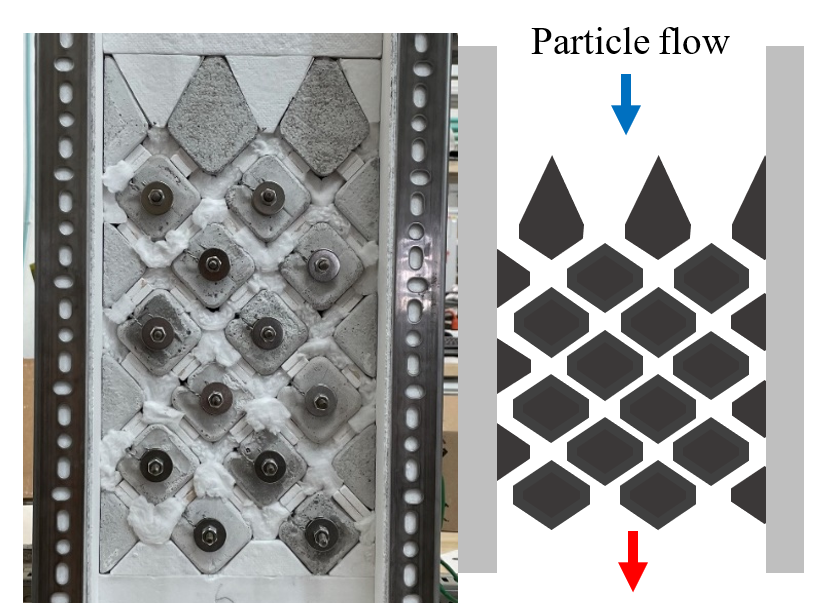2022 Annual Meeting
(206b) DEM and Experimental Comparison of Particle Heat Transfer and Geometry Driven Particle Flow Patterns
Authors
Aaron Morris - Presenter, Purdue University
Jason Schirck, Purdue University
Korey Cook, National Renewable Energy Laboratory
Zhiwen Ma, National Renewable Energy Laboratory
The discrete element modeling (DEM) technique is used to predict the particle temperature distribution and heat transfer coefficient of an experimental particle heater. The simulation results are then compared to experimental measurements for a small-scale heater. The experimental setup contains rows and columns of tubes with a diamond-like cross-section. The tube surfaces are embedded with heating wires. Figure 1 shows a schematic of the heater (right) as well as an image of the experimental apparatus where particles can be seen flowing around the various heater elements. The heaters are set to 600°C, and the inlet flow of the particles is approximately 400°C to match the experimental conditions. Overall, the particle temperatures between the numerical and the experimental work match within 10%, for several locations within the heater. Also, the heat transfer coefficients predicted by the discrete element simulations is nearly identical to the experimentally determined values. A unique oscillating flow pattern at the heater outlet is observed in the DEM simulations. The oscillatory flow pattern occurs when the upper-most surface of the heater tube is curved.


